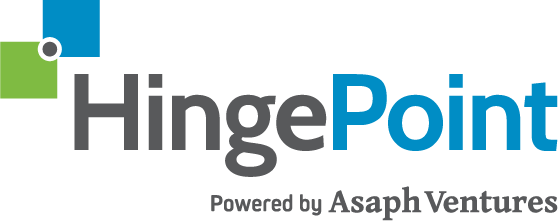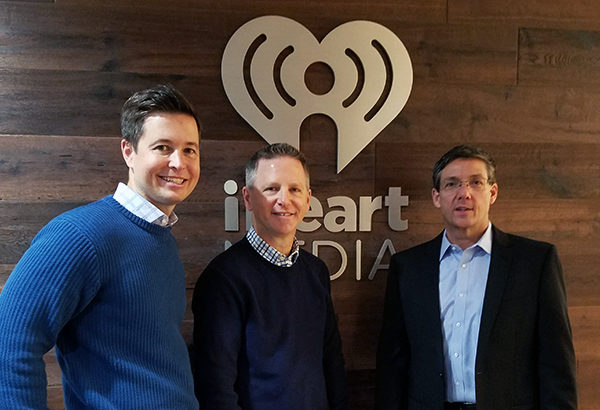Toyota and Lean Land in Plano, Texas
If you know anything about Toyota North America headquarters, you probably heard it is moving to Plano, Texas. They are building a remarkable new headquarters building near Legacy West.
But what you might not know is that Toyota has revolutionized how companies and organizations around the world work together through something called lean. Lean is a philosophical approach created by Toyota in the 1930s to eliminate waste so you can better serve customers.
“Being Toyota’s neighbor in Plano is outstanding,” HingePoint CEO and Founder Bryce Finnerty said. “We not only eliminate waste for our clients who are doing redundant work because of the software they are using, we have adopted the philosophy in our own work.”
The HingePoint team has been reading “2 Second Lean” by Paul Akers for about a year now. We read a page in our morning, 30-minute huddle, and we all try to “lean out” our workflow.
Akers, who sent a personal message to the HingePoint team via YouTube, said lean is very simple and it should not be complicated.
“Lean is simply the elimination of waste by taking every process that you do every day and just removing that waste and making it a little more efficient and easier for you to do,” Akers said. “Lean should make your work more enjoyable. If it does that you’re going to be more productive, the quality is going to go up, the customer is going to win, the company is going to win and you’re going to win.”
Lean thinking is spreading. According to the Lean Enterprise Institute, almost all industries are applying lean thinking to their businesses: logistics and distribution, services, retail, healthcare, construction, maintenance, and government.
“Indeed, lean consciousness and methods are only beginning to take root among senior managers and leaders in all sectors today,” according to the Lean Enterprise Institute,
But what exactly does ‘lean out’ mean?
When we say “lean out your work,” we’re saying, “See where you are wasting time or resources and fix it.” Be like Toyota, and lean thinking will vastly improve your business.
If you only save two seconds on repetitive tasks, those seconds start adding up if you continuously improve. And if you take the philosophy to heart, you can lean out your life both personally or professionally.
Another good way to lean out your workflow is to fix what bugs you. Actually, all HingePointers are paid 40 minutes Tuesday through Friday to find something that bugs them and to fix it.
We’ve had employees redesign entire personal offices to learning more Excel keyboard shortcuts. You can see a list of more examples below.
So Why is Toyota and Lean Important?
Toyota vastly improved Henry Ford’s assembly line, by seeing how they could eliminate waste. Toyota called the philosophy of complete elimination of all waste the Toyota Production System.
“Waste can manifest as excess inventory in some cases, extraneous processing steps in other cases, and defective products in yet other cases. All these “waste” elements intertwine with each other to create more waste, eventually impacting the management of the corporation itself,” according to Toyota.
The production system was created with the objective of “making the vehicles ordered by customers in the quickest and most efficient way, in order to deliver the vehicles as quickly as possible.”
How does this apply to your business?
Toyota and lean thinking goes hand in hand.
But think about your own customers. Are they getting your best work in the most efficient way possible? Or do you have waste? Are you wasting time because you have some software that isn’t working the way you want it? Do you have all your data in one place?
Entire companies have been created around the idea of eliminating waste. HingePoint is one of them. We help you take control of your critical data that is locked in a server and can’t communicate with other systems.
HingePoint Lean
Equipment and Office
- Started Leaning out (organizing and getting rid of stuff) Marketing Shared folders
- Charge computer near the front door when not being used so it is easy to grab when leaving
- Began Leaning out Office to fit new filing cabinet in closet to hold all paper documents for current clients
- Organize File Folders/Cabinets
- Got monitor adapters so team can all work on two screens in my home office
- Bought extra plug-ins for computer home office to get in and out of home office quicker
- Got another TV screen from Bryce to save time on group collaboration, extra screen for 2 Hingepointers
- Set up 3 workspaces in my office so we don’t have to waste time when the team gets to my house for a work session
- Turn on computer first thing in the morning to let it boot up while I do other stuff rather than waiting for it to load
- Got a second computer cord to save time plugging my computer in and taking my cord with me everywhere and then having to plug it in again when I get home
- Bought a $15 keyboard and mouse so I can have two work stations in my office
SharePoint
- Used Jonathan’s template for Data Mapping to speed up my data mapping for SharePoint
- SharePoint data mapping – do one column at a time, adding data in batches
- SharePoint data mapping – use existing mappings as templates for similar sites
- Created the project management folder structure for SharePoint in a dropbox template to save time when making cutover
- SharePoint future state mapping – leave Brendan’s comments when data is the same
- SharePoint future state mapping – use keyboard to switch between tabs
- SharePoint future state mapping – instead of typing commonly used phrases, copy from other fields
- SharePoint future state mapping – a lot of the fields are the same across contracts; only change what is different
- Set up all requirements for list views in new SharePoint so that I wouldn’t have to review what I was thinking and then rework the requirements after discussing with developers
- SharePoint future state mapping – use keyboard shortcuts for review
- When transferring files between folders, open two copies of Windows Explorer for the destination and source
- SharePoint future state mapping – use keyboard shortcuts for review comments, like Alt+R+C for new comment
Salesforce
- Use the best lighting when scanning business cards to Salesforce
- Set up salesforce filters to automate reporting
- Be logged into programs (SF) earlier in the day
- Wrote down the configuration for the salesforce lead filters, so if they get deleted again it will be a quick fix
Tableau
- When connecting to online data sources in Tableau, always have a good internet connection
- When connecting to data sources in Tableau, validate credentials outside of Tableau first, don’t try to troubleshoot inside of Tableau
Excel
- Learn keyboard shortcuts in Excel for common tasks, i.e. Alt+H-I-R for insert row
- In Excel, do as much navigation as possible with the keyboard
- Excel shortcut: F2 to edit cell contents instead of double clicking
- Started using some of Jonathan’s excel shortcuts that he taught us
Other
- Organized candidates, recruiting backlog
- Turned off social media notifications to be able to focus more on work
- Saved phone number for daily huddle GoToMeeting
- Only work through one VPN at a time
- Organized applicants in spreadsheet so I don’t waste time trying to figure out who is who
- Brought iPad to meeting with Dronomy to lean out bringing my entire laptop setup
- Installed a Chrome extension called StayFocused to block distractions
- Added Amazon Chime daily huddle dial-in as a contact in my phone
- Created Content Widgets to easily share content on the blog
- Use Power BI to create graphs wherever possible
- Emptied downloads folder to avoid scrolling to find newly downloaded files
- Close windows and tabs that are not relevant to the work at hand
- Make scorecards for client throughout the week to avoid rushed work on Fridays
- For data dictionary, fill out all data names for a screen first and then define them
- Data mapping/dictionary – use two screens
- Brought iPad to meeting yesterday instead of laptop to take notes so I didn’t have to pack a whole bag
- When working through VPN on servers, work in the morning/early afternoon to avoid lag that occurs in the evening and spend time packing up and unpacking my laptop and accessories
- Edit template in meeting as we go, so we don’t have to take notes and then do rework after the meeting
- Improved server access status template
- Had Jonathan set up Scorecards while I was in a meeting so I could send them out when I got home
- When uploading client weekly reports, copy both reports together to avoid clicking down into folder structure
- Tested everyone’s email and password before sending them to the developers so we didn’t waste anymore time
- In future, send meeting invite to client and let them either accept or decline, rather than wait for them to respond to my emails
HingePoint covers the AEC Industry and is the author of The AEC Industry 4.0 Report and the Autodesk Industry Report 2017. HingePoint helps construction and real estate development companies take control of their company’s information. We combine systems, software, and data so all company information can be seen and accessed from one screen, like a smartphone or computer.
HingePoint provides Procore, SharePoint and Salesforce consulting for Commercial Real Estate and Construction companies. HingePoint also helps the AEC industry with development & integration of AutoDesk and Procore products with enterprise systems. We are a trusted partner with over 25 years experience of systems development and integration work in the AEC industry. Our clients range from top hotel brands and restaurant chains to AEC firms and real estate developers and Facilities Management. We provide BIM with ROI. Results Guaranteed…Literally Guaranteed.




